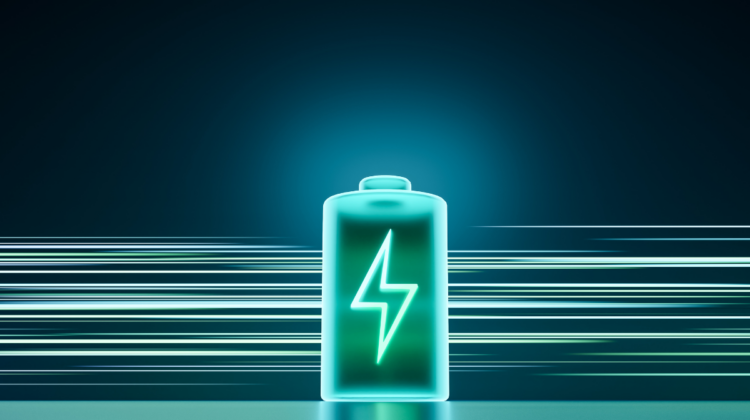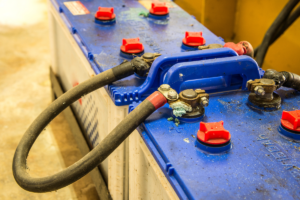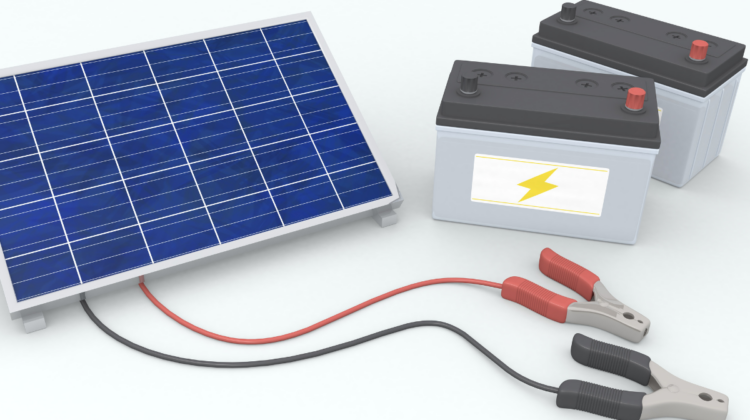
If you’re exploring solar energy systems for your home or business, you’ve likely come across solar batteries. These devices play a crucial role in making solar power practical for everyday use by storing excess energy for when you need it. But how do solar batteries work? This guide will walk you through the basics of solar battery technology in simple, easy-to-understand terms.
Why Solar Batteries Matter
Solar panels generate electricity when the sun shines, but what happens when it’s cloudy or night time? That’s where solar batteries come in. They solve a fundamental mismatch between when solar energy is produced and when we typically use electricity:
- During sunny days, solar panels often generate more electricity than needed
- Peak household energy usage typically occurs in the evening when solar production is low or zero
- Without storage, excess solar electricity gets sent back to the grid, and you draw from the grid when your panels aren’t producing
Solar batteries allow you to store your excess solar energy and use it when you need it, increasing your energy independence and potentially saving money.
How Solar Batteries Store Energy: The Basics
At their core, solar batteries store electrical energy in chemical form and convert it back to electricity when needed. Here’s a simplified explanation of how this works:
- Charging: When your solar panels produce more electricity than you’re using, that excess energy flows to the battery
- Chemical Conversion: Inside the battery, electrical energy is converted to chemical energy through reactions between specialized materials
- Storage: The energy remains stored as chemical potential until needed
- Discharging: When you need power (at night or during an outage), the chemical reaction reverses, releasing electrons that flow as electricity to power your devices
Common Types of Solar Batteries
There are several types of batteries used in solar energy systems:
Lithium-Ion Batteries
How they work: Lithium ions move from the negative electrode (anode) to the positive electrode (cathode) during discharge, and back when charging.
Advantages:
- High energy density (store more energy in less space)
- Longer lifespan (typically 10+ years)
- Deeper discharge capability
- Minimal maintenance
For Example: Tesla Powerwall, LG Chem RESU
Lead-Acid Batteries

How they work: Chemical reactions between lead plates and sulfuric acid create and store electrical energy.
Advantages:
- Lower upfront cost
- Well-established technology
- Good for backup power applications
Disadvantages:
- Shorter lifespan (3-7 years)
- Lower depth of discharge
- Require maintenance
- Larger and heavier than lithium-ion
Flow Batteries
How they work: Store energy in liquid electrolyte solutions that flow through a membrane.
Advantages:
- Very long lifespan
- Can be fully discharged without damage
- Easily scalable by adding more electrolyte
Disadvantages:
- Lower energy density
- Higher cost
- Relatively new technology for home use
Key Components of a Solar Battery System
A complete solar battery system includes:
- The Battery: Stores energy as described above
- Battery Management System (BMS): Electronic “brain” that monitors battery health, temperature, and charge levels
- Inverter/Charger: Converts DC electricity from solar panels to AC for home use, and manages battery charging
- Monitoring System: Allows you to track energy production, storage, and usage
Some systems use a single integrated unit that combines these components.
The Energy Flow Process: Step by Step
Let’s walk through how energy flows in a solar system with battery storage:
During Sunny Periods (Excess Generation)

- Solar panels convert sunlight into DC (direct current) electricity
- If you’re using less electricity than your panels are producing, the excess flows to the battery
- The battery management system ensures proper charging (rate, voltage, etc.)
- Chemical reactions inside the battery store the energy
- If your battery is full, excess electricity can be sent to the grid (if grid-connected)
During High Demand or No Sun
- When your energy needs exceed what your panels are producing, the battery begins discharging
- The stored chemical energy converts back to electrical energy
- The inverter converts the battery’s DC electricity to AC for your home appliances
- Your home draws power from the battery instead of the grid
- The BMS monitors the discharge rate and battery health
Battery Capacity and Performance Metrics
When shopping for solar batteries, you’ll encounter these key specifications:
Capacity
Measured in kilowatt-hours (kWh), this tells you how much energy the battery can store. A typical home battery might range from 5-15 kWh.
Power Rating
Measured in kilowatts (kW), this indicates how much electricity the battery can deliver at once. Think of capacity as the size of your gas tank, and power rating as the size of the fuel line.
Depth of Discharge (DoD)
This percentage indicates how much of the battery’s total capacity can be used before recharging is recommended. Modern lithium-ion batteries often allow 80-100% DoD.
Round-Trip Efficiency
This percentage shows how much of the energy put into the battery can be retrieved later. Higher is better, with top batteries achieving 90%+ efficiency.
Lifespan/Cycle Life
Usually measured in cycles (one complete charge and discharge), this indicates how long the battery will last. Quality lithium-ion batteries may offer 6,000-10,000 cycles.
Practical Considerations for Homeowners

If you’re considering adding batteries to your solar system, keep these factors in mind:
Sizing Your Battery System
To determine the right size:
- Calculate your average daily electricity use (typically 20-30 kWh for an average home)
- Decide how long you want backup power to last
- Consider whether you want to power your entire home or just essential appliances during an outage
Installation Location
Batteries should be installed:
- In a clean, dry location
- With proper ventilation (especially lead-acid batteries)
- Within operating temperature ranges (typically 32-113°F for lithium-ion)
- Near your electrical panel and solar inverter to minimize wiring
Cost Considerations
A complete home battery system typically costs:
- $7,000-$15,000 for a basic system with one battery
- $15,000-$30,000 for larger systems with multiple batteries
- Additional costs for upgraded electrical equipment or backup power features
Many regions offer incentives that can reduce these costs by 20-30%.
Benefits Beyond Energy Storage
Solar batteries offer additional benefits:
Backup Power During Outages
Unlike standard grid-tied solar systems that shut down during power outages, systems with batteries can provide continuous power to essential devices.
Time-of-Use Optimization
If your utility charges different rates depending on the time of day, batteries can help you avoid high-rate periods by using stored energy instead of grid power.
Reduced Dependence on the Grid
For those seeking greater energy independence, batteries allow you to use more of your own solar energy and buy less from the utility.
Conclusion
Solar batteries transform solar energy from an intermittent power source to a reliable, around-the-clock energy solution. By understanding how they store and release energy, you can make informed decisions about incorporating battery storage into your clean energy system. As technology advances and costs continue to decrease, solar batteries are becoming an increasingly practical component of home energy systems, providing greater energy independence, resilience during outages, and even financial benefits through optimized energy use.
